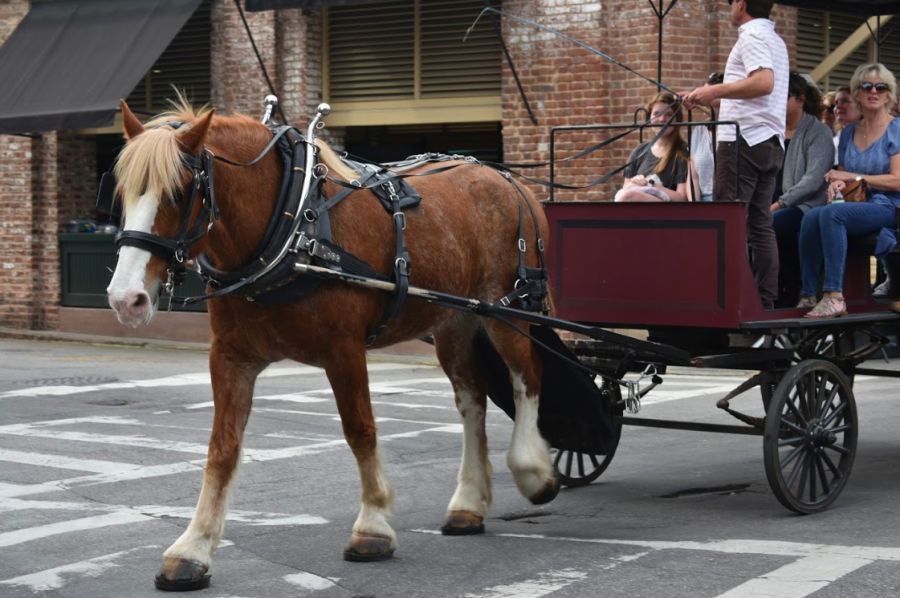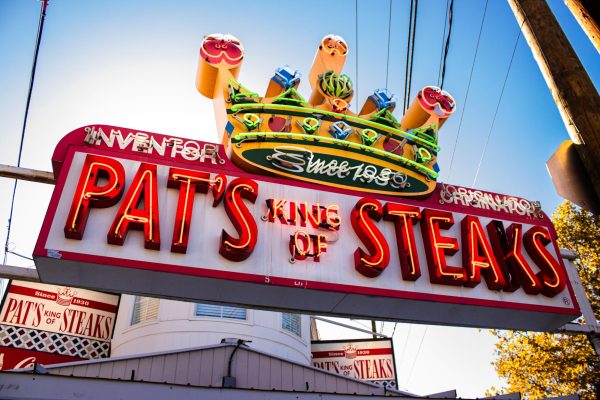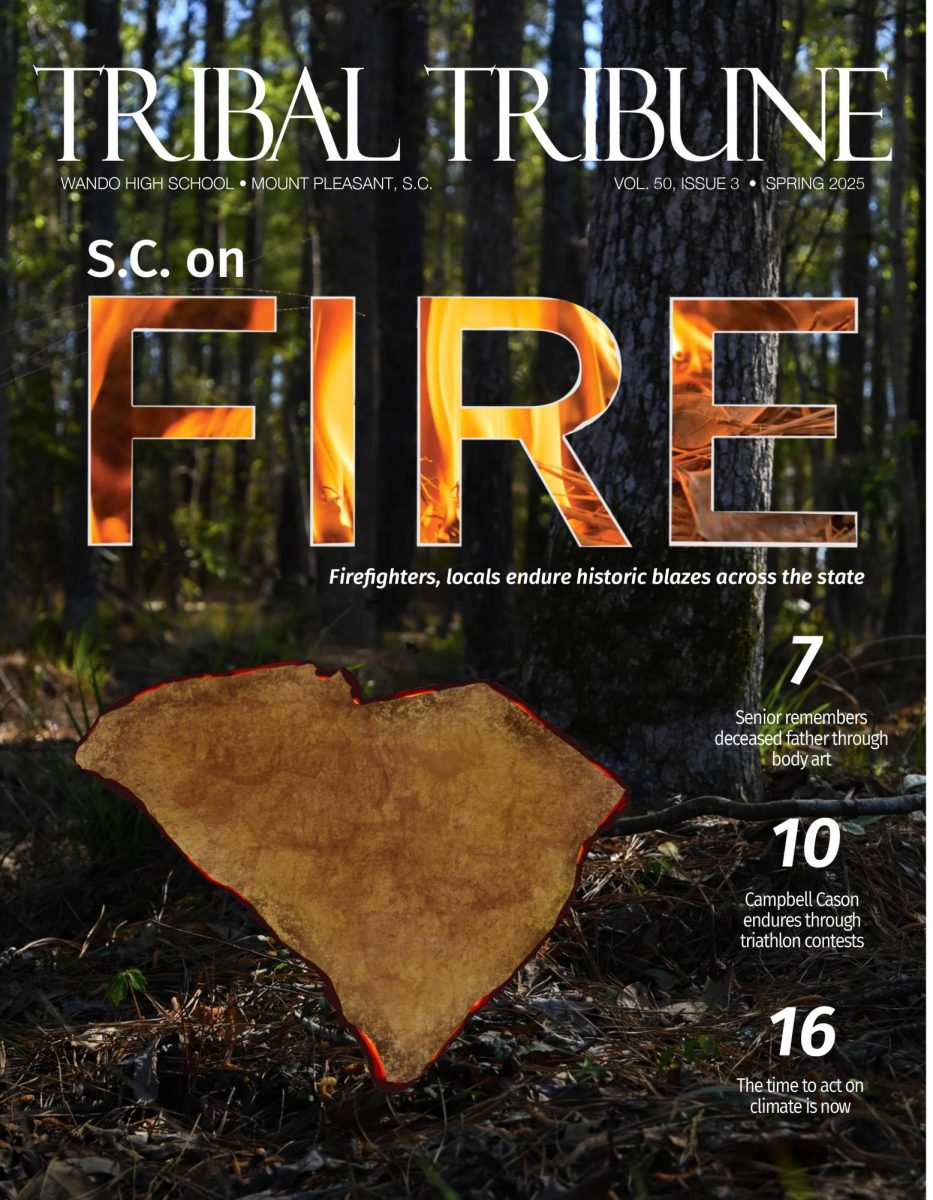Teacher Edward Macy finds passion in giving tours around Charleston
A tour guide in downtown Charleston shows a group of tourists the sites of the city.
May 3, 2019
It all started 25 years ago. Trident teacher Edward Macy — who teaches dual enrollment classes at Wando — began leading tours around the beautiful city of Charleston that has been home to him his whole life.
Macy’s tours vary in topic, but the one common factor in all of them is that they’re all intriguing.
“I do one that’s based on ghost stories, then I do regular history tours, which involves war, architecture, disasters, slavery, gentrification, pretty much any topic from historical to modern. But I also do specialty tours like cemetary tours, graveyard tours, Gullah tours, anything,” Macy said. “I’ve been doing it 25 years, so I’m pretty good at being able to figure out what people want to hear about. I try to make it as interesting as possible, because there’s some cheesy stuff out there. It’s not really what you say, it’s how you say it too, a lot of it’s the delivery is part of it.”
When Macy leads his tours, he tends to stray from the typical tours. He’s able to give his customers a more local level tour by staying away from the overcrowded tourist spots.
“When I do ghost tours, I go through the College of Charleston because it’s less crowded and it’s kind of a cooler, creepier ambiance down there,” Macy said. “When I first started doing this 25 years ago, there were maybe like three ghost tours in Charleston. Now there’s like 50, so you kind of want to stay away from the mob.”
Macy leads walking tours for his self-employed company, Ed Macy Tours, just about every day. However, he did not begin by leading walking tours.
“I used to work in bar, and it was smokey, and I wanted an outdoor job, and I like animals, so I actually started doing a carriage tour,” he said. “I quickly learned that I hated that, I liked the horses, but it was just one after another, kind of the lowest common denominator of redneck basically, so I started doing walking tours a year later and I’ve been rolling ever since.”
Many untrue stories are told about Charleston, and Macy loves to make it clear what is true and what is just a story.
“Dispelling myths. Like there are so many myths about Charleston, like that slaves were sold in the old city market, which is untrue. They were sold in different neighborhoods south of there. Just seeing people’s reaction to stories like the Great Earthquake. People are like, ‘I didn’t know they have earthquakes in Charleston.’ But mainly dispelling the myths that you hear so often with people, legends and stuff, I like busting them up,” Macy said.
Much of his customer basis is people who went on a tour in the past and are returning for more because they had enjoyed it so much before.
Throughout the years, Macy has had some interesting experiences living in Charleston and he is able to incorporate his own personal experiences into the stories he tells.
“There’s a building on Chalmer Street, which is kind of in the French Quarter. When I was in college — I went to the College of Charleston — I worked at a funeral home and I got a call to pick up a Confederate widow from this building in 1990. I thought the caller was confused or pulling my leg, but I got over there and there was this 96-year-old dead woman laying in a bed,” Macy said. “When I typed her obituary later that night, I found out she married her husband when she was 14 and he was 94 — there was an 80 year difference. Turns out she was a Confederate widow and she got to live in that building until she died in October of 1990. So I try to make personal stories like that, like I try to connect myself into it a little bit.”
Macy tells many stories, but he has one particular favorite.
“One of my favorite stories is to tell people how much happened in South Carolina during the American Revolution. Because when people come here, they totally think Civil War, because it started out at Fort Sumter in 1861. But the Civil War started here but then it left,” Macy said. “The Revolution, more blood was shed in South Carolina, and in the Lowcountry, than all of the other colonies combined. People don’t know that, you know they come down here thinking about the 19th century but it was really the late 18th century when the battles were fought and the blood was shed, the Independence War.”
Macy also enjoys discussing how poor Charleston used to be and what it was really like back in the Jim Crow days.
“There’s a little building on Church Street that I love going to where it was the real life location of Porgy and Bess basically, and it’s a cool story to talk about. Not only how rich Charleston used to be, but how broke it used to be,” Macy said. “And the Jim Crow days of the early 20th century which was just as brutal as slavery, you know when you talk about Charleston’s history.”
Macy’s stories also stand out from the others. He has a way of making them unique to him.
“The way I tell the stories. You hear a lot of tour guides, you know they have that carriage tour voice and it sounds kind of monotonous, like they’re going through some sort of script. I try to use as much acrobatic language as possible. I try to use excellent diction. Tone also is part of it. The art of storytelling, I’ve been doing it a long time and I’ve crafted it and edited my stories over the course of time so where there’s no fact, I’ve got them lean,” Macy said.
Macy got into leading tours because of his passion for speaking and his love his home, which is the beautiful city of Charleston.
“Loving history, and I enjoy speaking, and I enjoy educating people about Charleston, because it’s such a cool place with such a funky history,” Macy said. “You know there’s no place like Charleston in this country to be honest with you.”






